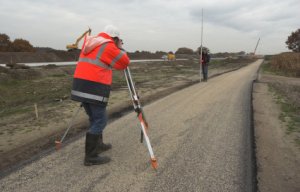
Transportation and civil engineering drives growth of geosynthetics
A new study from The Freedonia Group Inc., shows that demand for geosynthetics is projected to advance 2.5 percent annually to over 900 million square yards in 2012, valued at $2.1 billion. Gains will be promoted by rebounding road and highway construction spending. The study also says that in the near term, demand is also expected to be promoted by components of the Obama Administration’s economic stimulus program that involve public works. Geosynthetics are

5th February 2009
Innovation in Textiles
|
Cleveland
A new study from The Freedonia Group Inc., shows that demand for geosynthetics is projected to advance 2.5 percent annually to over 900 million square yards in 2012, valued at $2.1 billion. Gains will be promoted by rebounding road and highway construction spending. The study also says that in the near term, demand is also expected to be promoted by components of the Obama Administration’s economic stimulus program that involve public works.
Geosynthetics are used to stabilize foundations, promote drainage and prevent erosion, generally at a lower cost than alternative products. Demand for high-performance geosynthetics, such as geomembranes, geogrids and preformed geocomposites, will outpace demand for less costly geosynthetics the study says. These and other trends, including market share and product segmentation, are presented in US Geosynthetics, a new study from The Freedonia Group, Inc., a Cleveland-based industry research firm.
According to Freedonia, in 2007, geotextiles accounted for more than 70 percent of area demand, due to their low cost and their drainage and structural support properties. In value demand, however, geomembranes accounted for the largest share of the market, comprising 47 percent, as geomembranes are significantly more expensive per square yard than other geosynthetics, Freedonia says. Geomembranes will continue to hold the leading share of value demand in 2012, although gains will be restrained by petroleum prices, which are forecast to advance at a less rapid pace than in the 2002-2007 period.
The study says that construction will remain the leading market for geosynthetics in area terms, primarily due to the application of geotextiles to provide support, drainage and erosion control in construction projects. The transportation infrastructure market will offer the strongest gains for geosynthetics through 2012, as geosynthetics will be used to make roads more durable, to improve drainage and to construct structures that prevent erosion.
The landfill market accounted for the largest share of geosynthetics value demand in 2007, due to the frequent use of high-cost geomembranes in landfills to seal off leachate pits and waste containment areas. Through 2012, gains in the landfill market will advance at a below-average pace. Increased interest in recycling and reducing wastes, as well as the durable nature of geosynthetics used in the landfill market, will restrain advances. Demand will advance most rapidly in the transportation infrastructure market, due to increased construction expenditures, and in other markets, especially agriculture, due to interest in increasing crop yields to make biofuels and mining, due to an expansion in US mining output.
The Freedonia Group is a leading international business research company, founded in 1985, which publishes more than 100 industry research studies annually. Freedonia claims this industry analysis provides an unbiased outlook and a reliable assessment of an industry and includes product segmentation and demand forecasts, industry trends, demand history, threats and opportunities, competitive strategies, market share determinations and company profiles.

Business intelligence for the fibre, textiles and apparel industries: technologies, innovations, markets, investments, trade policy, sourcing, strategy...
Find out more